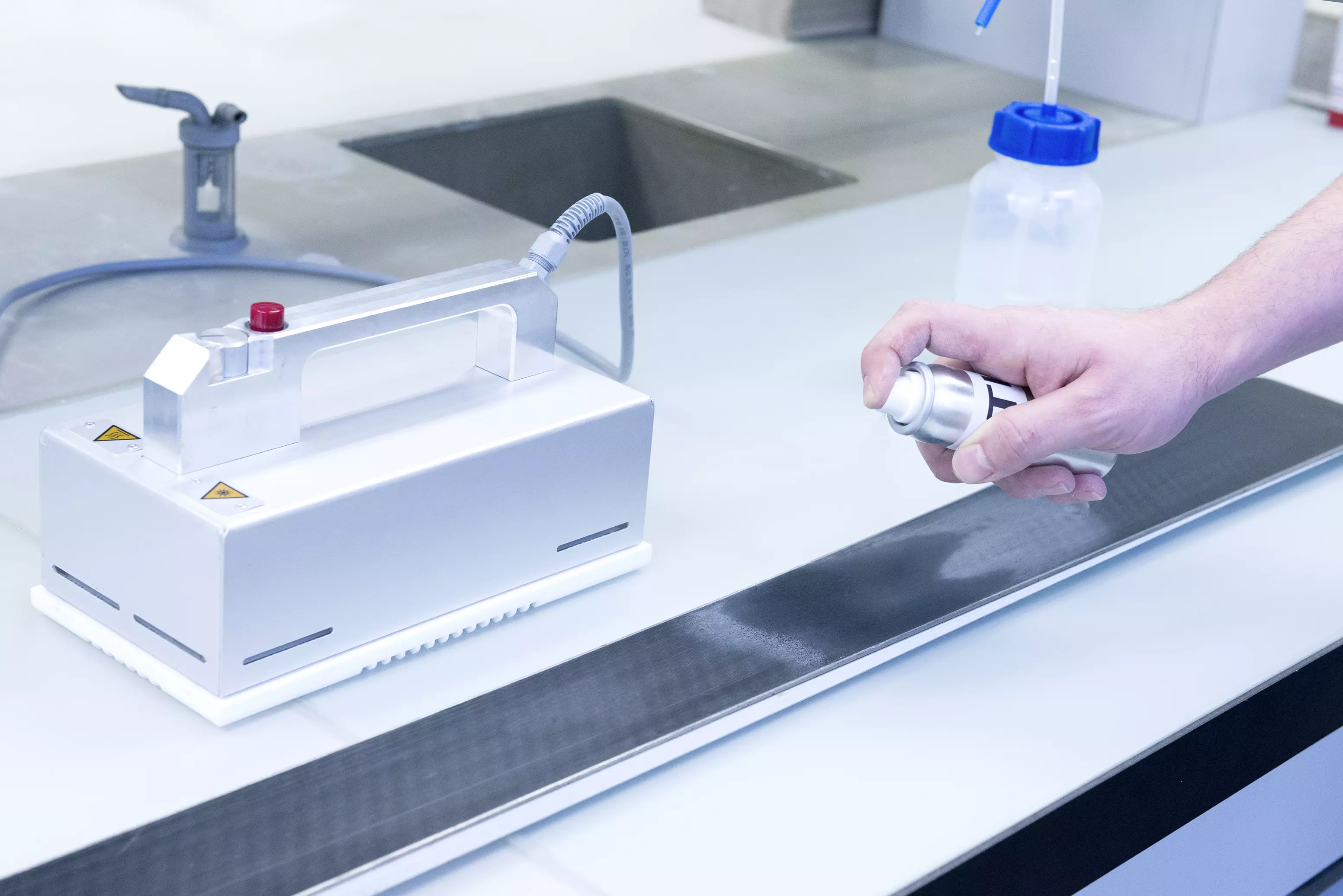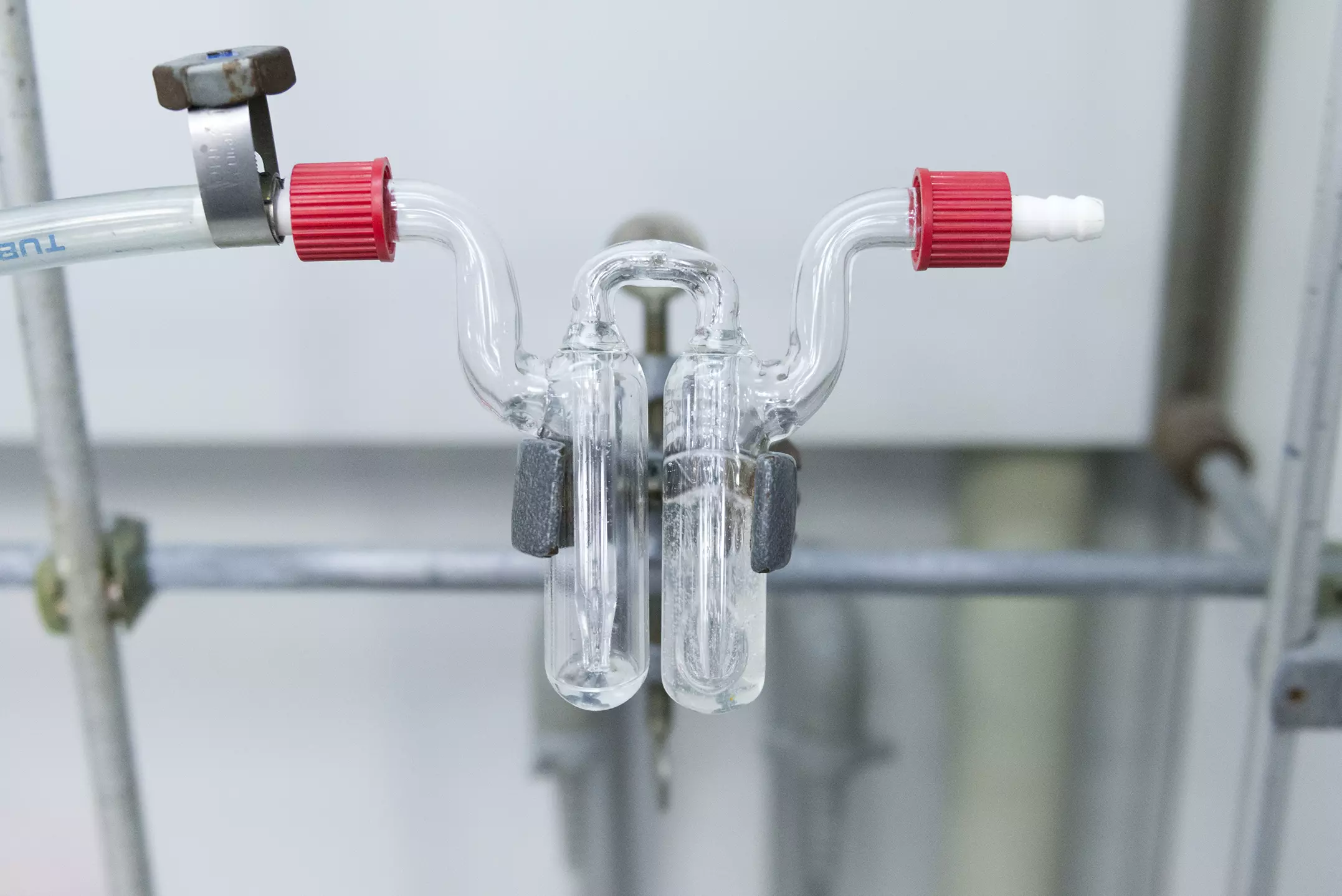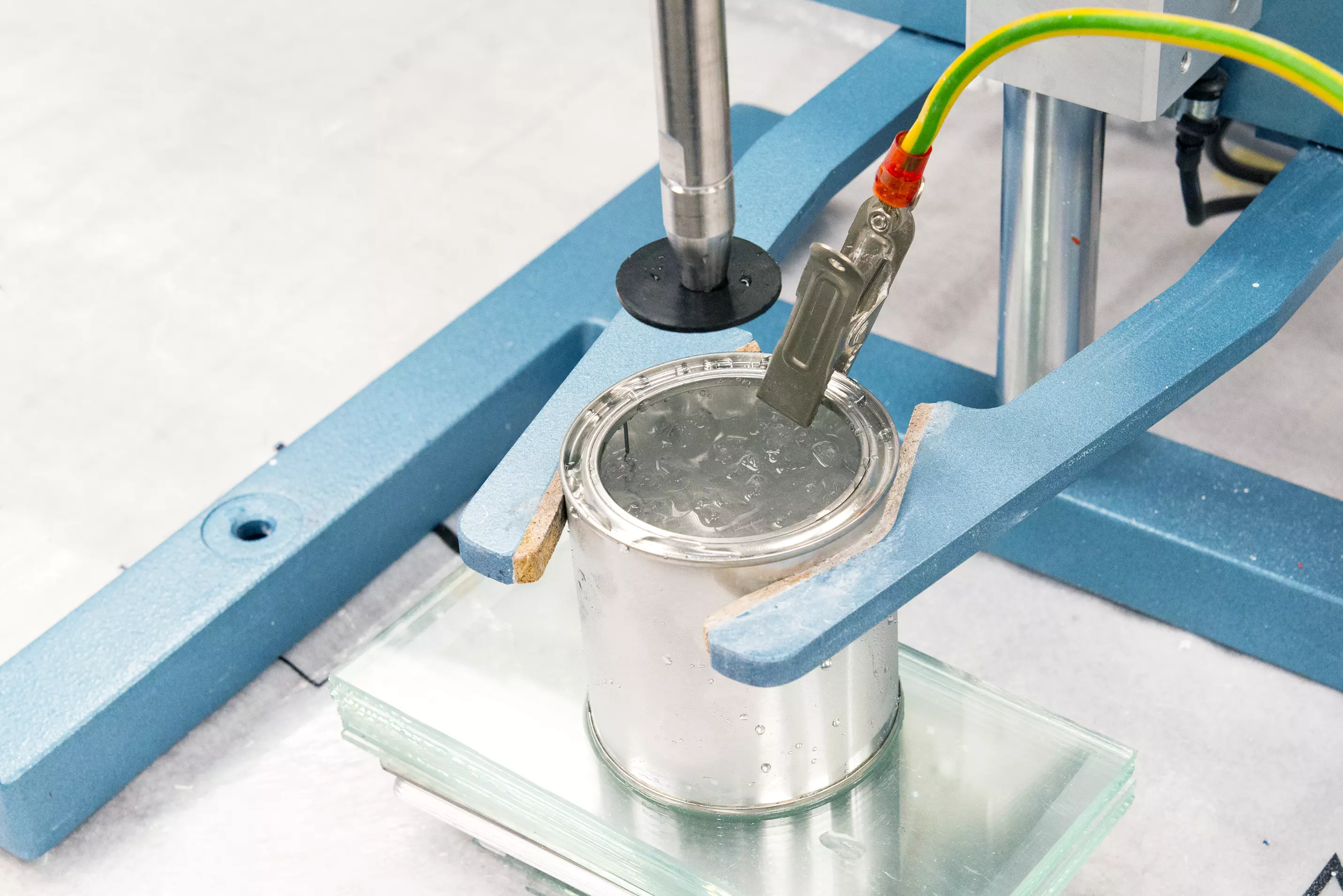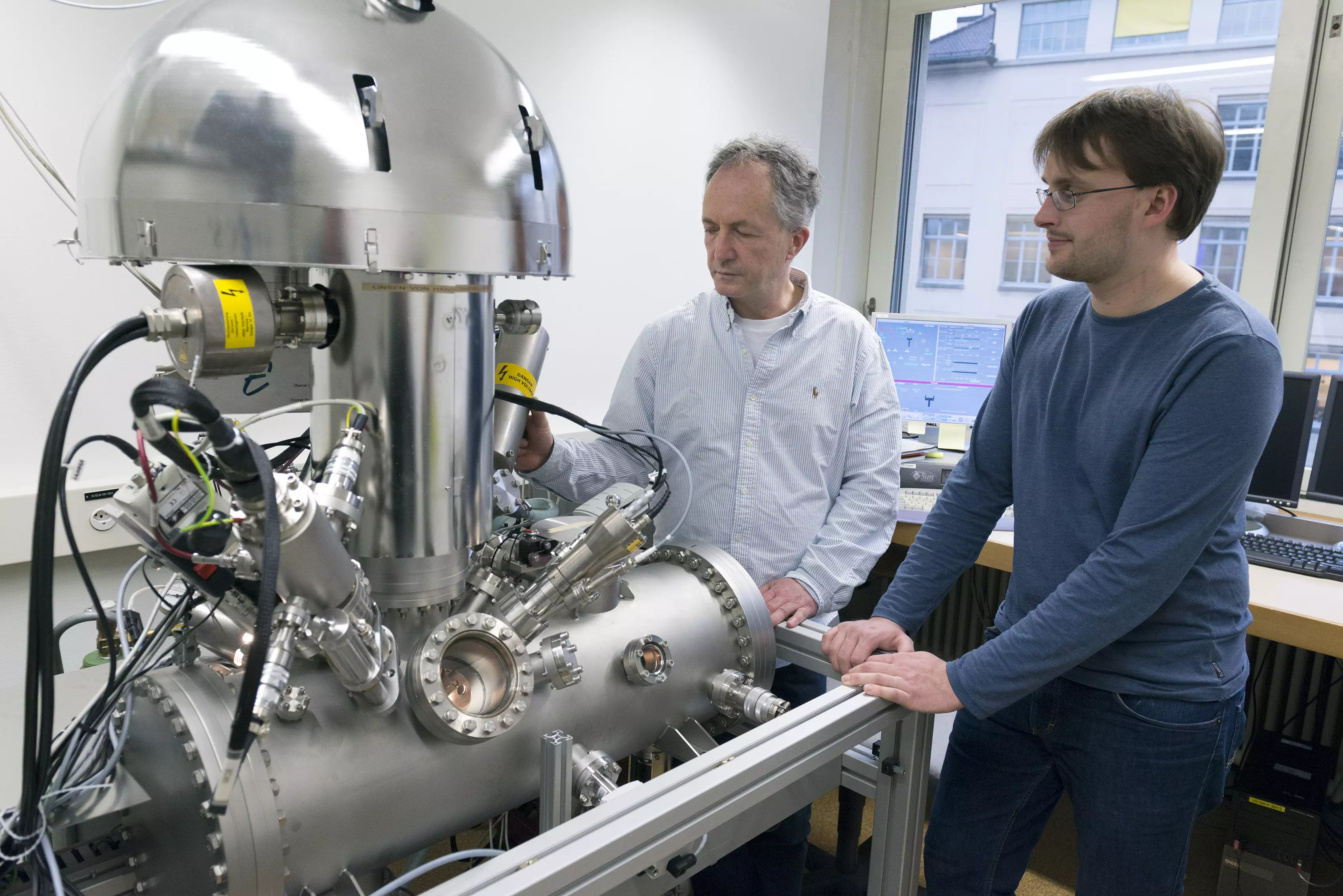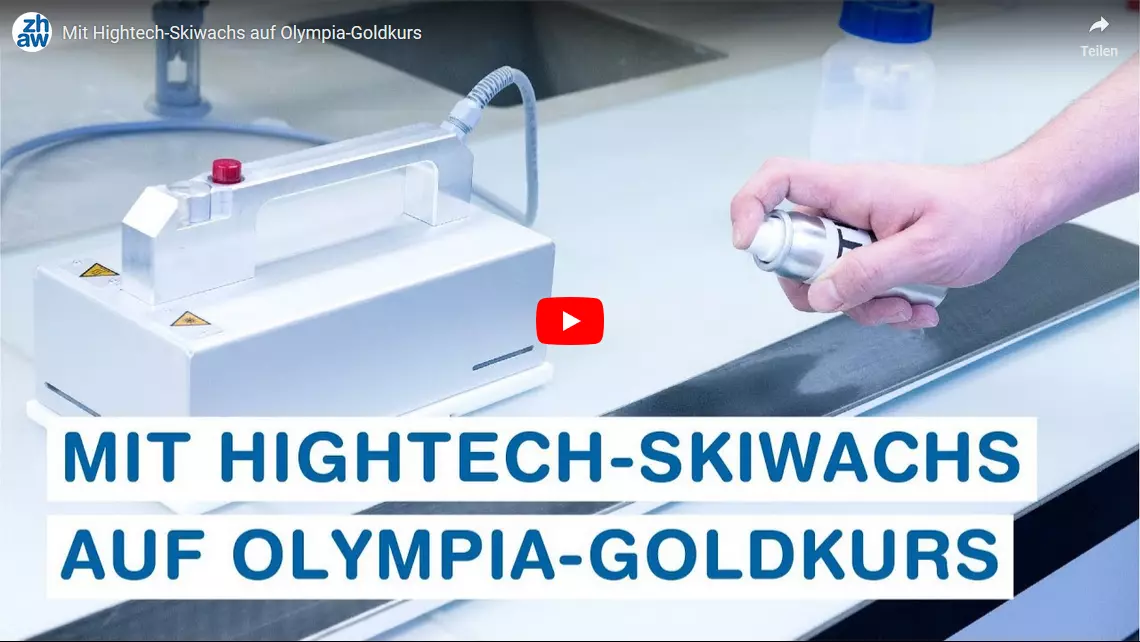ZHAW high-tech ski wax to be used at the Olympics
Just in time for the Olympic Games, researchers from the Zurich University of Applied Sciences (ZHAW) have developed an innovative ski wax that adheres to the ski for longer than existing products, thanks to a designer molecule. Laboratory tests have shown that the new wax rubs off twice as slowly as conventional ski wax. Tests on the ski run promise new record times.
The more water-repellent the surface, the faster the ski. Abrasion produces a thin water film which acts as a lubricant. Today, more effective highly fluorinated carbon compounds, for example, are used instead of simple paraffins. However, all conventional high-performance ski waxes to date have rubbed off fast. This means that ski surfaces have no wax after a short space of time, which leads to increased abrasion.
“Conventional ski wax will not even stay in place for the duration of a race,” explains Konstantin Siegmann, project manager at the ZHAW School of Engineering. “The reason for this is that ski surfaces are made of an extremely unreactive synthetic material which hardly forms any chemical bonds.”
Designer molecule forms chemical bond
Sponsored by Innosuisse, researchers from the Institute of Materials and Processes at the ZHAW, in association with the TOKO company, developed a wax to solve this problem by building a new designer molecule through a chemical reaction. If this synthetic molecule is irradiated by a mercury-vapour lamp, the wax forms a tight bond with the ski surface and thus remains in place for longer. The molecule reacts to UV light and splits nitrogen, leaving highly reactive nitrene, which binds the wax to the low-reactive plastic.
Performance improves up to 1.5 per cent
Abrasion tests performed in the laboratory by ZHAW researchers proved that this photoreactive ski wax is indeed more durable than conventional wax. “The photoreactive ski wax proved to rub off twice as slowly as conventional high-performance ski wax,” according to Siegmann. The laboratory tests were followed by extensive field tests with ski specialists. The focus was on cross-country skiing because the boundary conditions could be monitored better. In cold weather conditions, the photoreactive ski wax showed the least friction. The time gain amounted to a saving of between 0.1 and 0.3 seconds in 20-second downhill runs, as compared with conventional high-performance ski wax. This equals an improvement in performance of up to 1.5 per cent. “This exceeded the improvement we had hoped for by far. The test runners didn't want to give back the photoreactive ski wax,” says Siegmann.
ZHAW ski wax to be used at the Olympics
Soon, these successful test runs could be reflected in new best times at tournaments. The ZHAW's photoreactive ski wax will be used at the Winter Olympics in South Korea in February. Amateur skiers, however, will have to be patient.
“At present, applying the wax using mercury-vapour lamps is still too expensive,” Siegmann states. “As soon as the wax can be applied more economically, it will also be accessible to amateurs."
Peer-Reviewed-Artikel
- Photografting of Perfluoroalkanes onto Polyethylene Surfaces via Azide/Nitrene Chemistry. Siegmann, K.; Inauen, J.; Villamaina, D.; Winkler, M. J. Appl. Surf. Sci. 2017, 396, 672-680.
http://dx.doi.org/10.1016/j.apsusc.2016.11.007 - Spectroscopy on photografted polyethylene surfaces using a perfluorophenyl azide: Evidence for covalent attachment. Siegmann, K.; Inauen, J.; Sterchi, R.; Winkler, M. Surf Interface Anal. 2018, 50, 205-211.
https://doi.org/10.1002/sia.6359
Contacts
Dr. Konstantin Siegmann, Institute of Materials and Process Engineering, ZHAW School of Engineering, phone: 058 934 69 29, e-mail: konstantin.siegmann@zhaw.ch
Matthias Kleefoot, Public Relations, ZHAW School of Engineering, phone: 058 934 70 85, e-mail: medien.engineering@zhaw.ch

